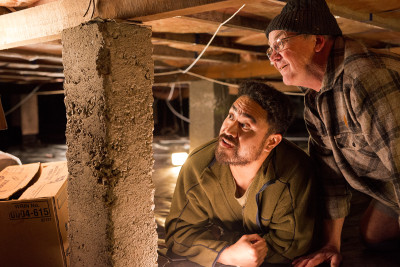Recent earthquakes a reminder to check your home is safe and secure
Following recent earthquakes felt across the North Island, EQC Toka Tū Ake is encouraging homeowners to make some simple checks on their homes, and to take actions that will help keep their whānau and properties safe.
“There have been several ‘light’ quakes across the past seven days that have resulted in more than 18,000 total ‘felt’ reports through GeoNet,” says EQC Public Education Manager Hamish Armstrong.
“While these quakes are unlikely to have caused damage, they are strong enough to get our attention and remind us that we live in a part of the world that is very seismically active,” he says.
EQC encourages New Zealanders to use these reminders to check up on their home and take steps to make it safer and stronger for the inevitable reality of larger quakes in the future. The Commission says a great place to start is with some simple checks around the home to identify elements that could be modified to prevent damage to homes, or injuries to people.

“A home that’s properly secured to its foundations will likely experience less damage during an earthquake,” says Hamish.
“If your home has a suspended timber floor, you may be able to go under your house to check foundations are in good condition and that correct fastenings and bracings are in place. It’s important that foundations are well connected to the house above as this will help minimise movement and damage in a larger earthquake.
EQC also recommends checking your chimney. Past earthquakes have shown how dangerous and damaging chimneys made from brick or unreinforced concrete masonry can be. When these extend above the roofline they can collapse to the outside of the house or through the roof.
“No matter its age or type, if your chimney is already showing signs of wear and tear, or damage, it could need immediate attention. Look for: cracks, loose or broken bricks, loose masonry or plaster, and leaning or twisting,” Hamish says.
Professionals are likely to be required for removing a brick or concrete masonry chimney and securing foundations, but there are also quick fixes we can all make to reduce the risk of damage and help keep you and your family safer.
“Look around your home for tall and heavy furniture and appliances such as bookcases, cabinets, tallboys, TVs and hot water cylinders and make sure they are securely fastened so they won’t topple over in a quake.
“Another simple action is to move big and heavy objects from high storage locations to cupboards or shelves that are lower down. Having these items low means that they can't fall onto you or a loved one during a quake, which could result in a serious injury,” Hamish explains.
“Finally, take a moment to check up on your insurance. Do you understand what would and wouldn’t be covered for should you suffer damage to your home or land from a natural hazard?
“In a country at high risk of natural hazards, we must do our best to prepare ourselves by understanding where insurance starts and finishes, and what we can do to fortify our homes to reduce the risks,” he says.
For more detailed information about making your home quake safe, head to https://www.eqc.govt.nz/be-prepared/homeowners/
Media enquiries
0274819096, media@eqc.govt.nz